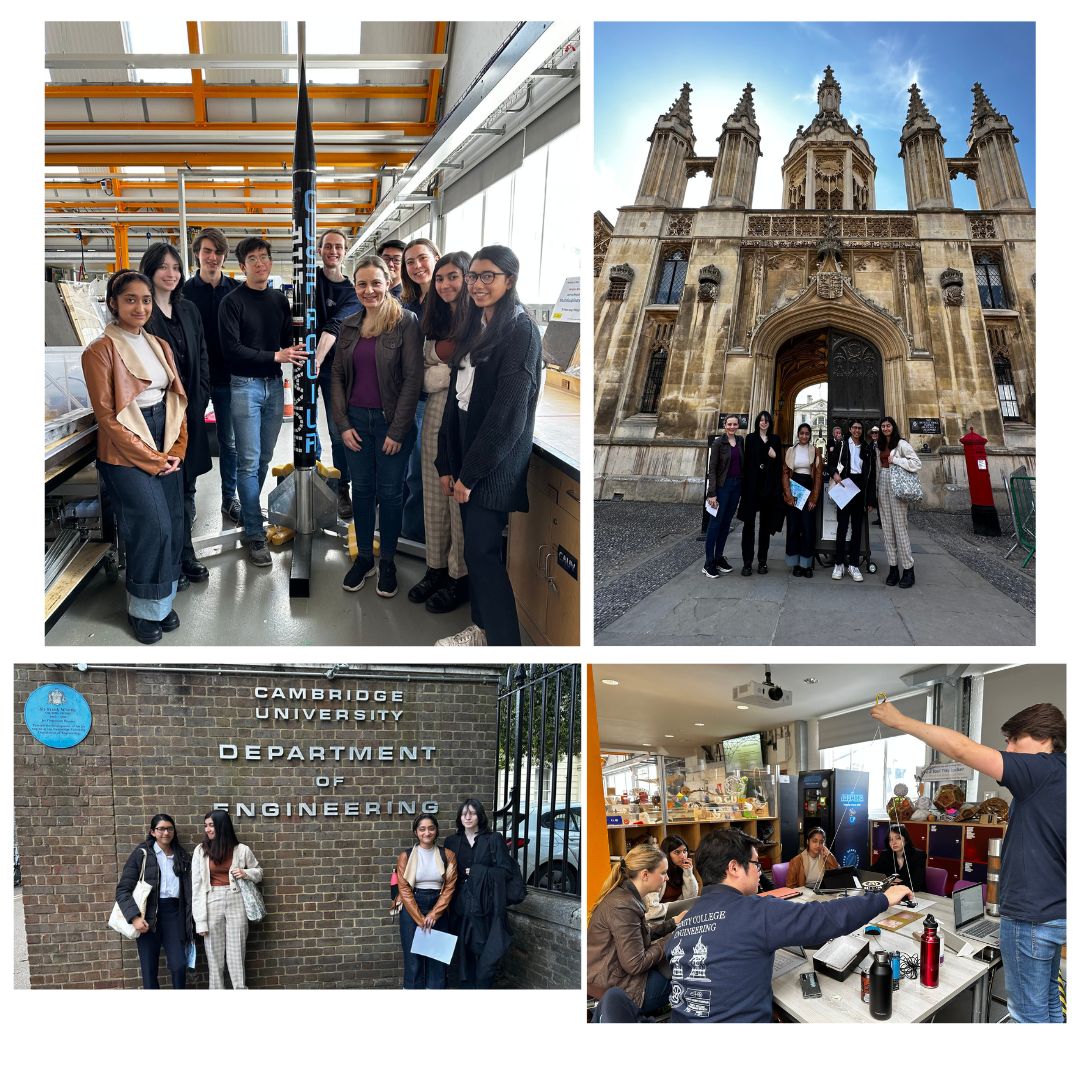Nicola Buttigieg, Head of Computer Science at Sutton High School, describes the highlights of a recent visit to Cambridge University’s School of Engineering as guests of the Cambridge University Flight Team (CUSF).
A select group of Sutton High Computer Science students visited Cambridge University’s School of Engineering at the weekend to begin the space technology field experience component of Sutton High’s 2023 Royal Society STEM Partnership Grant project.
Students participating in the GDST Space Technology Diploma programme took part in a variety of valuable skill-building activities led by the Cambridge University Space flight team and coordinated by CUSF’s field projects manager William Yu, and CUSF President, Jamie Russell.
The main thrust of the CUSF-mentored activities focused on computer science automation in the context of remote data collection for an upcoming CUSF high-altitude balloon (HAB) flight test.
Tutorials included practical operation programming skills for airborne imager and sensor robotics (in layman’s terms a flying camera or a sensor for detecting remote particles), together with automation of their data collection and cloud-based processing. Around this subject students were prompted to consider choices for remote data transmission technique, factors impacting the airborne transmission pipeline, selection of predictive machine learning models according to outcome results comparison, and tackling conditions that airborne computer payloads may endure during flight, including restriction of computational power during remote collection.
Some of the tasks were specifically designed to build on a series of prior-attended GDST diploma-based computing tutorials which meant that our students were well versed in how to understand both advanced-level snapshot lectures and coder upskilling task sets provided by CUSF subject matter experts. Our students were already familiar with Pi computer device hardware sensor, camera and radio transmission peripherals, AWS cloud-deployed machine learning model data ingestion and introductory data visualisations using a hobby rocket science simulation library.
Contributing towards their first introductory, industry-upskilling initiative were CUSF undergraduate student specialists Elisabeth Rakozy, who discussed mechanisms for rocket propulsion, Chris Li, on avionics control engineering and Sam Ross on coded formulas to generate heat transfer visualisation maps.
As part of their experience the students took part in a Q & A which became a lively technical discussion covering topics such as industrial-scale transmission via flat patch antenna propagation, avionics PID loop control engineering and use of quadratic models for running commercial standard regression chart maps.
The CUSF Aquila test rocket was showcased to students to provide them with an insight into the iterative design process and latest technical developments. The Aquila Rocket is currently being optimised to reach an altitude of 3km and is set to act as a testing platform for their much larger rocket, Griffin, set to run a self-designed pressure-fed motor (known as White Giant) and will aim to reach 150km, exceeding the student altitude record and verifiably breaching the Karman Line.
In the context of the impending HAB flight experiment, the students were presented with a final taster opportunity to apply their newly learnt polynomial regression scientific formulas to original, industrial standard HAB data, so to predict workplace scenario pressure, temperature, altitude, and nitrogen dioxide reading correlations. More crucial investigations were also made toward accuracy of predictive models adhering to airborne-specific sensitivities of the data, not immediately evident to students within the scope of their usual, classroom-based exercise experiments.
The students hope that they will also apply these new skills to raw data obtained from their upcoming Royal Society-funded rocketry launch, taking place in June 2023, with the hope of attempting data normalisation in line with historical NASA Earth satellite data going back 20 years.
Carried out as a partnership between Sutton High School and Cambridge University Space Flight, the upcoming Royal Society STEM Partnership-funded HAB and research rocketry launches will be the first in a line of experiment preparations accommodating a trial, scaffolded computer science project learning approach.
The approach seeks to employ the Society’s scientific methodology process in line with the existing routine of the USA-based NASA DEVELOP internship model for experiential learning in the industry field. Building on evidence obtained during student completion of tasks encompassing these experiments, the eventual learning model hopes to assist in reinforcing the bridge for space industry programming skills in students, from a firm grounding in senior high school A level, and to support steady upskilling progression through to second year pre-internship undergraduate level. Earlier this year, Amazon Web Services (AWS) also supported the initiative by investing in a Proof of Concept (POC) agreement with Sutton High, toward constructing an accessible, student cloud-based platform to facilitate the processing of remote test data transmitted on demand during their student experiments-in-progress.
Sutton High School, GDST
Head of Computer Science, Nicola Buttigieg

